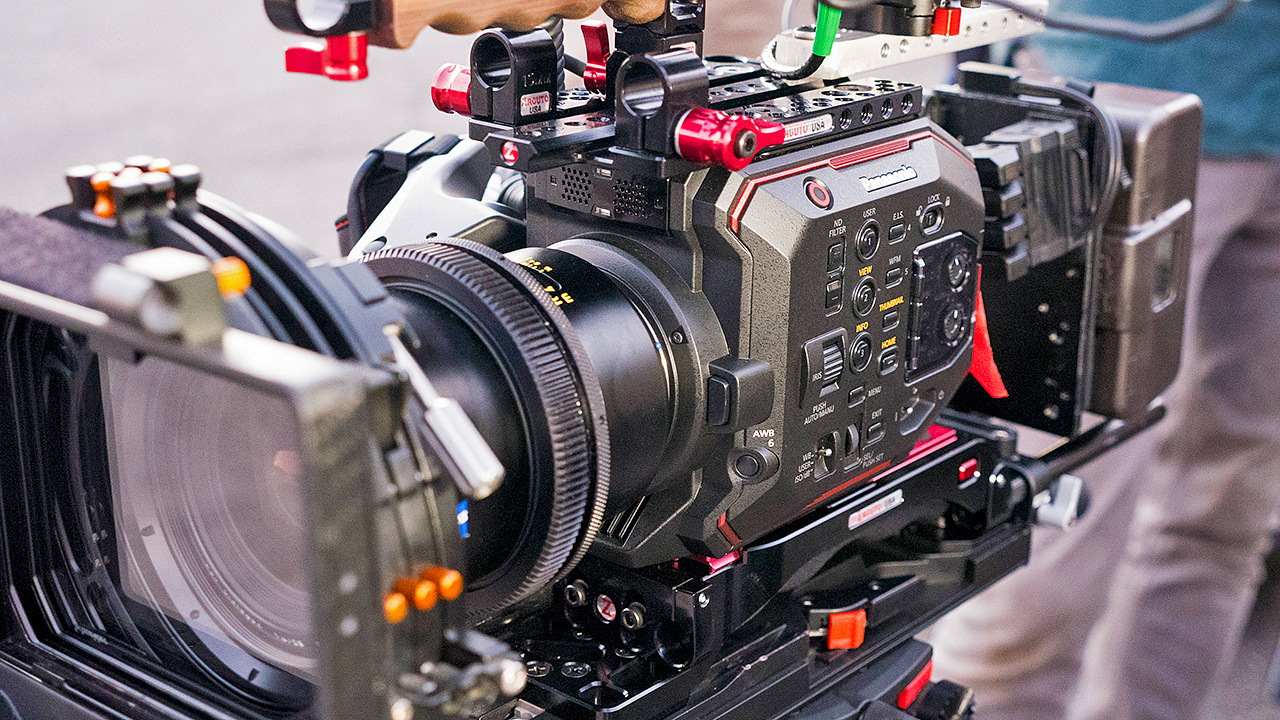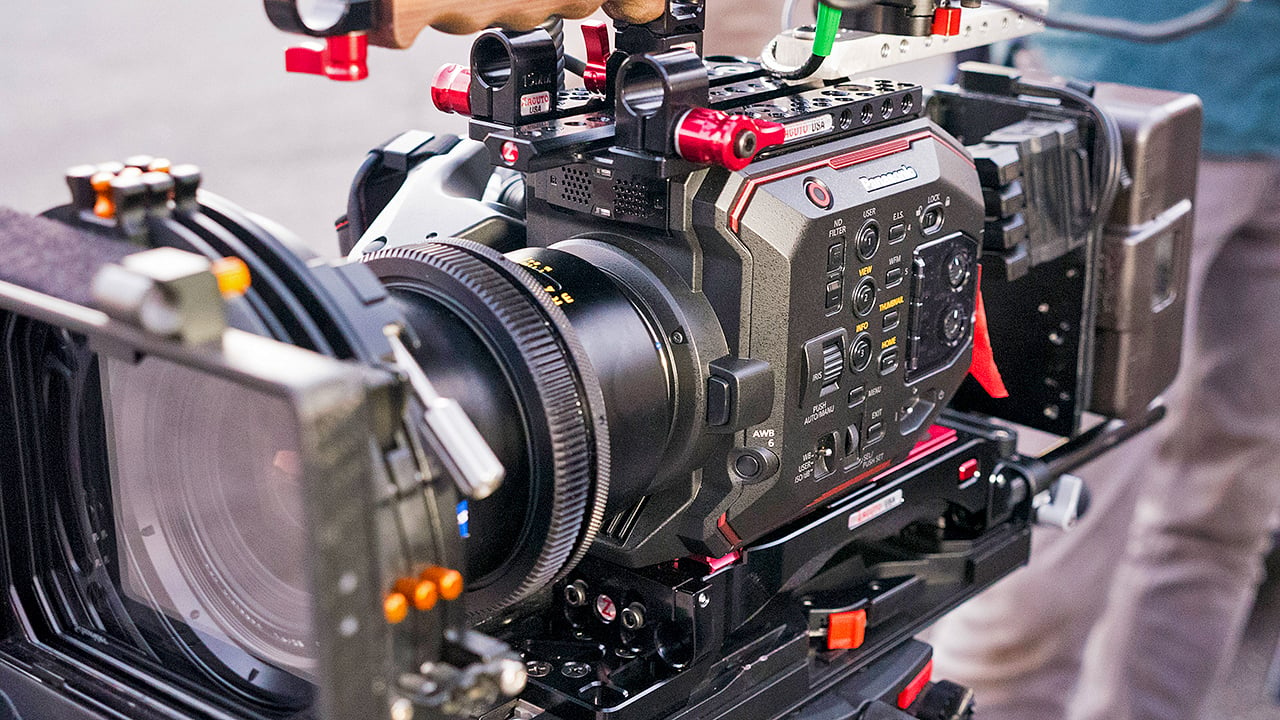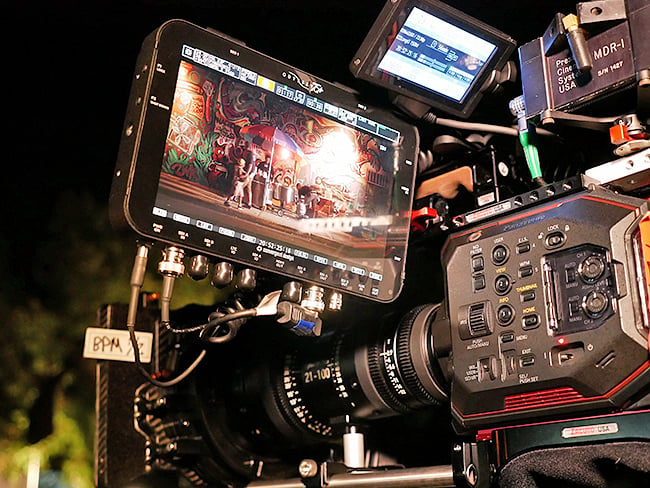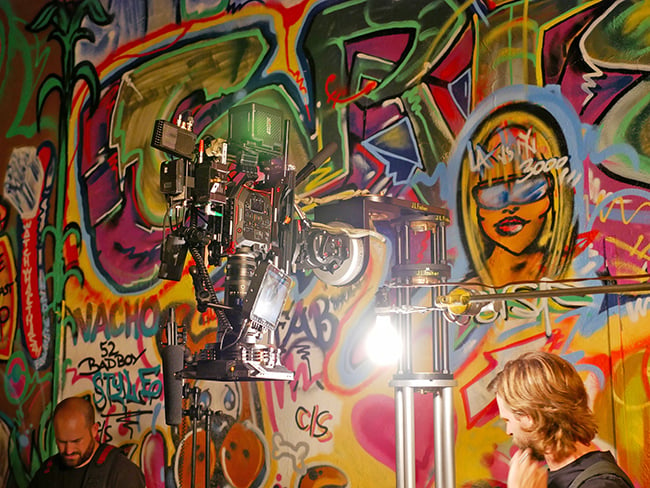

This is the age of affordable cinema cameras. But there’s much more to consider than price. Here’s why the EVA-1 is so good.
The new EVA1 is a great all-round camera. It’s an ideal camera for independent cinema and drama, and it’s small and light enough to be chosen for documentaries that need an up-market look.
But there are three standout talents that distinguish it from other cameras in this marketplace. We’re going to focus on those in this article.
5.7K sensor
It’s still a slightly surprising fact that sensors in single-sensor cameras are natively black and white. They only detect brightness and need an additional colour filter pattern laid on top to yield colour images.
The science is now well established: you find Bayer Pattern filters almost everywhere. But it’s also a well accepted principle that these colour filters reduce the resolution. A Bayer-Filter pattern alternates Red-Green on one row, then Green-Blue on the next, and then repeats. By borrowing info from nearby photosites each pixel is assigned a full Red/Green/Blue color value, but this borrowing also reduces overall resolving power. Not, perhaps, as much as you’d think, but enough for you to need some additional pixels if you're going to output a genuine 4K in colour.
The Panasonic EVA1 has a 5.7K sensor. Which means that by the time the deBayer calculations are carried out, there’s a true 4K colour picture. The difference can clearly be seen on a resolution chart, where the EVA1 can clearly delineate 2000 lines pairs, while other 4K cameras might max out around 1600 line pairs.
There are other benefits to this. Since the actual 4K image is derived mathematically from a 5.7K original, noise is reduced, and the overall image is smoother without reducing sharpness. Aliasing (moire) is lower too, and because there are so many more individual color samples the overall color rendition is more finely graduated and accurate..

Dual ISO
Dual ISO is the ability to shoot at two different ISO settings as if both were native, because in fact they both are. Let’s take a look at what this means.
EVA1 comes with a Native ISO of 800, but also with a Native ISO of 2500.
Native ISO means the exposure setting where there’s no gain applied. It offers the maximum possible dynamic exposure range with the minimum possible noise. All other cameras have only one Native ISO, but the EVA1 (and its VariCam relatives) have two Native ISOs. This is accomplished using two separate pathways for pulling information from the sensor, a traditional method and a specially-optimized path. So there are two points where the cameras perform optimally: one for good lighting conditions, and one for lower light.
This opens up all sorts of possibilities. It’s easy to imagine how useful it is to gain an extra one and two thirds extra stops. You’ll be able to get low-noise shots even where the lighting is inadequate. But there are new creative possibilities too. You can use a zoom in situations where other cameras would need fast primes. With less light needed, you’ll be able to use smaller lights and more of them. Imagine “painting” a scene with light.
You don’t have to use the two Native ISOs exclusively. Either Native ISO can be used as a base and then positive or negative gain can be applied as on other cameras. The full available range is 200 ISO up to a startling 25,600 ISO. The EVA1 has intrinsically low noise, boosted by the downscaling from the larger-than-4K number of pixels. But if you use the two Native ISOs as starting points, you’ll get fantastic results that are surprisingly good for a camera at this price-point.
One final bonus of having two native ISOs: you’ll be able to shoot at two ISO settings without having to change your depth of field.

Same colour look as Varicam LT and Varicam 35
The EVA1 is a natural progression upwards from Panasonic’s Mirrorless Micro 4/3 GH5 camera. But it’s actually a closer little sister to the VariCam LT and VariCam 35. This is because the EVA1 has exactly the same colour look and exposure range as the larger cameras. EVA1 has the same V-Gamut color space and the same V-Log contrast curve
Incredible though it might seem, you can intercut footage from the EVA1 with material from the VariCams, making the EVA1 a natural “B” camera for these larger devices.
Matching across cameras can be a huge task, and potentially very time consuming in post. With the EVA1, VariCam LT and VariCam 35, the cameras already match. Any adjustments to the image for one can be equally applied to the others for perfect consistency.
And this includes HDR: the EVA has 14 stops of Dynamic Range, and can capture colours beyond the Rec. 2020 colour gamut. For live or pregraded production, the EVA1 is able to output HLG for maximum usability.
So this is not only a massive boon to anyone shooting across these three cameras (EVA1, VariCam LT and VariCam 35), it means that the EVA1 must be extraordinarily capable in absolute terms to be able to do this.

Finally
The EVA1 is a camera that’s easy to afford, and yet is compatible with some of the most respected cameras in the industry. To find more information on the EVA1 visit (US) and (Europe)
Tags: Production


Comments